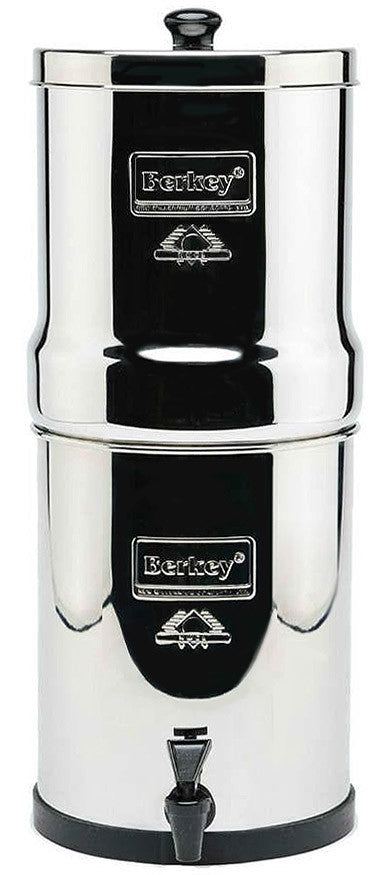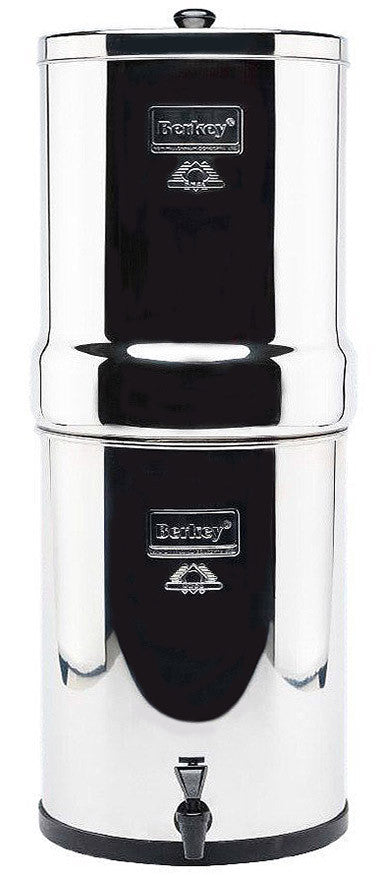
When your home’s water supply comes from a public water supply, you may notice an annual drinking water quality report along with your water bill.
This report is essential for you to know your home’s drinking water safety.
Here is everything you need to know about this report.
Consumer Confidence Report
Also called the “Water Quality Report,” it is information that rates the condition of your local drinking water quality. It contains the source of your drinking water, a list of contaminants present, potential health effects, contaminant levels in your CCR compared to national standards, and any violations of health-based standards.
It also contains more sources of information, such as EPA, your healthcare provider, and your water provider company.
A Little History of the Consumer Confidence Report (CCR)
A federal law was amended on August 19, 1998, requiring community water systems to send each household a detailed report on their water quality. This amendment is called the Safe Drinking Water Act or the Consumer Confidence Report (CCR).
According to the Environmental Protection Agency (EPA), this act sets standards for drinking water quality and, with its partners, implements various technical and financial programs to secure safe drinking water.
Safe Drinking Water Act
The SDWA has been amended several times since its original passage in 1974. These amendments were enacted to address consumer needs across the United States and, crucially, to safeguard public health by regulating the nation’s drinking water supply.
More than 170,000 public water systems provide clean drinking water to Americans. This federal law is just as crucial as refining and getting the water quality right for the American public. Thus, this report is given yearly.
When Is This Report Released?
The CCR is an annual Water Quality Report released on July 1st. It shows the findings of the previous year's water testing and provides information about the previous year's CCR.
Who Receives This Report?
This law required water companies to release this report to residents. Residents who do not pay their water bills, such as those living in apartments, condos, or rented houses, may need to contact their building managers or owners. They can also check online to see if their CCR has been posted.
The EPA does not regulate people who get their water from private wells, so their CCR is not released or required. To learn more about safe water for maintaining private wells, visit the CDC's private GroundWater Wells.
What You’ll Learn Inside the Report
The first page of the water quality report explains the standards your public water system provider upholds. Local water system providers tailor their CCR information containing certain elements as follows:
Water Source
This may include rivers, lakes, aquifers, or other sources. Identifying the sources is crucial to knowing the possible “contaminants” such as minerals or chemicals. These chemicals include pesticides, herbicides, organic chemicals, and radioactive materials. Microorganisms may exist at varying levels in water sources.
Levels of Contaminants
Some contaminants listed as “contaminants” in your report are added as a disinfectant. Such disinfectants are chlorine and chloramine to kill germs in the water. They will still be listed as contaminants.
This is why it is crucial to understand the acceptable levels of these contaminants in your water. Awareness of this enables you to take extra precautions, such as filtering water and preventing waterborne illnesses.
EPA Standards for Safe Contaminant Levels
The EPA sets the standards for the level of contaminants in your water. The CCR shows these contaminants and their level and whether they “violated” their set level. It is important to see whether there is a violation indicated “yes” in the report. Knowing this allows you to take steps to do something with your water.
Health Effects of these Contaminants
The CCR indicates all the possible health effects of the contaminant in your water. It also gives general information about common parasites in water sources, such as Cryptosporidium, a microscopic parasite that causes the diarrheal disease cryptosporidiosis.
Other than health effects, it also accounts for the steps to be taken to restore the safety of your drinking water.
Other Important Information
CCRs include additional information such as EPA’s Safe Water Hotline phone numbers, local Healthcare providers, and Water Companies. CCR also includes other additional information to help you better understand your water according to where your water sources are.
How to Interpret Your Water Quality Report
To understand better how the table or chart in your report flows, follow along with the number and their corresponding meaning below:

-
Contaminants: This table shows they are not “bad” contaminants. They are anything found in your water other than oxygen and hydrogen, which make up water. Both can be healthy and unhealthy, depending on the kind of substance and quantity.
-
Maximum Contaminant Level Goal (MCLG): If you see “Your Water” value below this MCLG value, there is no expected or known risk to your health.
-
Maximum Residual Disinfection Level Goal (MRDLG): If you also see the “Your Water” value is below this MRDLG value, there is also no expected or known risk to your health.
-
Maximum Contaminant Level (MCL): If the value of “Your Water” exceeds the MCL, your water system violates EPA regulations.
-
Treatment Technique: A necessary process to downsize the level of a contaminant in drinking water.
-
Maximum Residual Disinfection Level (MRDL): The highest disinfection amount in your drinking water. An optimal amount of disinfection in the water is enough to kill the microbes and germs.
-
Your Water: The actual contaminant level in your water during sampling.
-
Range Detected refers to the high and low at which contaminants are detected in your drinking water.
-
Sample Date: The date(s) of testing. Some contaminants may not be tested every year.
-
Violation: It shows whether an excessive contaminant level surpassed the level set by the EPA.
-
Typical Sources: The information where the contaminants are found commonly
Water Quality Report and Its Sections
Section 1 - Introduction, Precautions, and Sources
Date
This report should be received every July 1st. It shows the findings of the water testing from the previous year. What you see in your current CCR are the findings from the previous year.
Language Options
Water providers must provide the CCR in the relevant languages for non-English-speaking populations, such as Spanish, French, etc.
Is my water safe?
Your water provider may include an introductory statement about the previous year’s water quality results and compliance.
Do I need to take special precautions?
CCRs must identify the people at risk of ingesting these contaminants in their water. These examples show that people must seek advice about their drinking water from their healthcare providers.
Where does my water come from?
This section outlines the water provider's delivery source, including wells, rivers, or lakes, along with its location.
Section 2- Water Assessment, Contaminants, Monitoring, and Involvement
Source Water Assessment and Its Availability
Assessments such as laboratory testing may be performed at your water source. The findings may also show the chemicals and germs present their quantity found in your water source.
Why are there contaminants in my drinking water?
The contaminants (chemicals or germs) can come from natural resources like a rock (arsenic) or are introduced by animals or people. Industrial sites may contribute to these contaminants in the water sources or places where they can travel to water through the ground. These types of contaminants are not easily removed in water treatments.
How can I get involved?
CCRs must provide information on how the public may participate in decisions that affect local drinking water quality.
Monitoring and reporting of compliance data violations
Should there be any violations of the levels of contaminants in the water quality, the water provider must be able to explain why it happened. Such violations may affect health, so they must also explain how they can be assessed.
Section 3- Lead, Nitrate, and Water Quality Data Table
Additional Information for Lead
Lead is a very hazardous contaminant that may be present in your water sources. Even if lead is not prevalent in your water sources, an educational statement is required on each CCR.
Additional Information for Nitrate
Other health-hazard contaminants, such as nitrate, may also be included in the CCR's informational statements. This is especially true when a system detects a level above five mg/L but below the MCL level.
Additional information for Arsenic
Additional information about Arsenic may be included if a system detects it above 0.005 mg/L and up to 0.010 mg/L. Arsenic is naturally present in the rocks, dislodging and contaminating water sources.
Water Quality Data Table
Aside from the elements found in the typical CCR, the following are other terms that you may find in your CCR:
Contaminant Name: The name of the substance analyzed in the water, such as lead, sulfate, chloramine, fluoride, etc. The Safe Drinking Water Act defines a “contaminant” as any physical, biological, chemical, or radiological substance or matter in the water. EPA monitored over 90 contaminants.
Contaminant Categories: This part in the table is a line that shows what groups of contaminants fall under. This usually includes categories such as Disinfectants (like chlorine and chloramine), Inorganic Contaminants (like lead, nitrate, and fluoride), and Organic Contaminants (like benzene and atrazine). Other categories may be seen depending on your water system.
Amount detected: The quantity of each contaminant found in your water source will also be shown here.
Other Options To Consider
Bottled Water
Bottled water may cause much more damage than tap water, but it may be a good temporary choice if your tap water has violations or is contaminated by a local source. Natural occurrences would be during flooding.
The US Food and Drug Administration (FDA) regulates bottled water for drinking. FDA also sets quality standards that are more or less equivalent to EPA’s drinking water standards. FDA also recommends that bottled water be handled like other food products and refrigerated after opening because bacteria can grow after the bottle is exposed to air.
Bottled water quality differs from other brands because of water source, handling, and treatment variations. Water is rarely completely free of contaminants. In most cases, contaminants are present at very low levels that do not pose serious health risks.
Home Water Treatment
Home water treatment is often more cost-effective than bottled water if you are concerned about contaminants found in tap water. Water treatment systems generally use one or a combination found in tap water.
Water treatment systems generally use one or a combination of the following processes: disinfection (ultraviolet light or chlorination), filtration (including activated carbon filters), reverse osmosis, and distillation. When buying a treatment unit, ensure it is designed to remove the contaminants of concern.
How To Improve Your Water Quality

The public can no longer relax and assume safe drinking water will always be provided. Public participation is needed to protect water resources, build adequate treatment plants, improve water delivery, analyze costs vs. risks, and enact appropriate legislation.
Local citizens will guide the wellhead protection planning process. This is an excellent opportunity for anyone concerned about safe water—for today and for the future—to get involved in protecting it. Private good owners must test their water regularly and protect the area around the well.
Conclusion
The reports provide information about the quality of drinking water. Consumers who requested this information from their water supplier have always had access to it.
Now, it is provided in an easy-to-read format and sent to their homes.
The guiding principle behind publicizing water quality reports is that people have the right to know what is in their drinking water and their water source.
Informed and involved citizens make wiser decisions, including investments in protecting and improving water quality, such as wellhead protection or treatment system upgrades.
Consumer "right to know" is an essential theme of environmental protection today.
← Older Post Newer Post →





